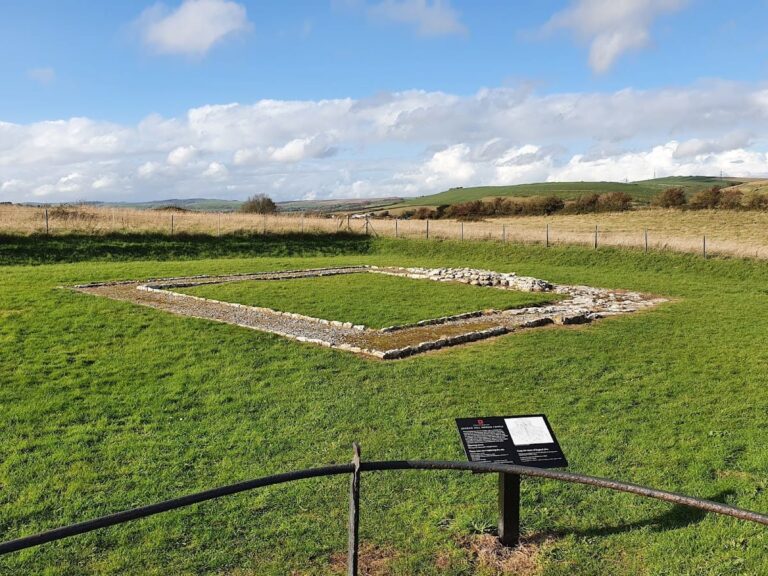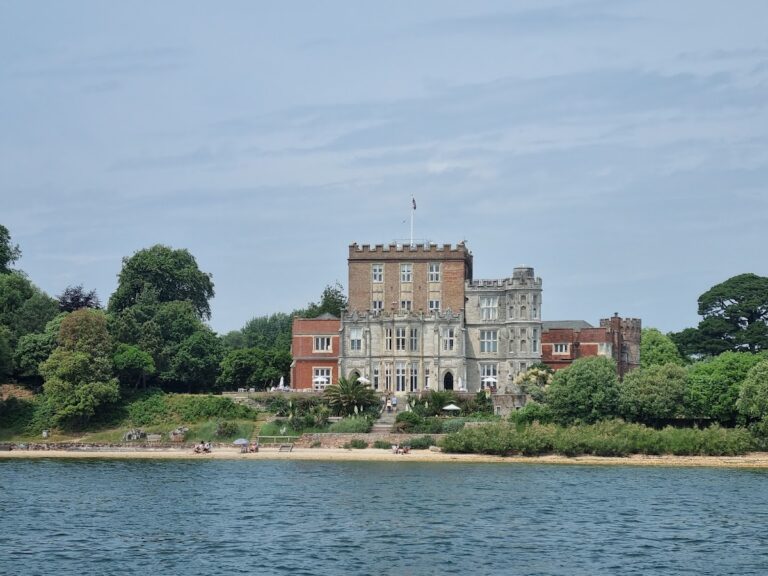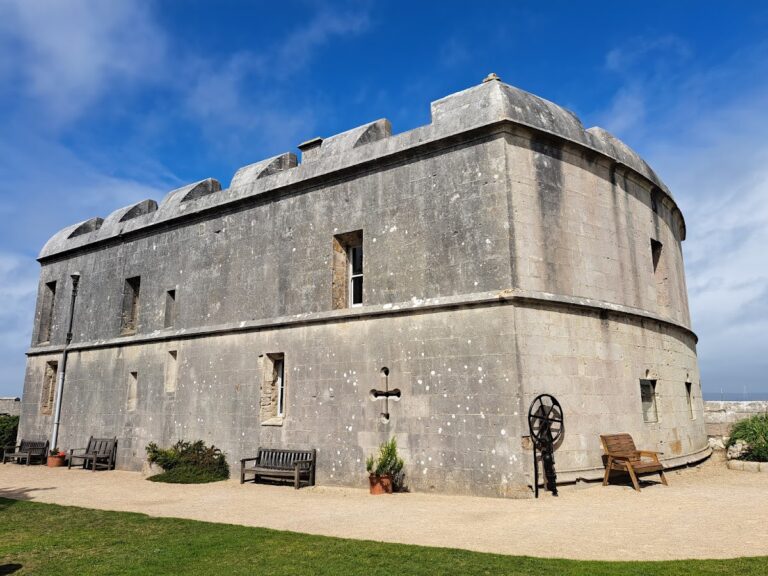Lulworth Castle: A Historic Jacobean Hunting Lodge in Dorset, England
Visitor Information
Google Rating: 4.6
Popularity: Medium
Google Maps: View on Google Maps
Official Website: www.lulworth.com
Country: United Kingdom
Civilization: Medieval European
Remains: Military
History
Lulworth Castle is located in East Lulworth, Dorset, England. It was built between 1588 and 1609 as a hunting lodge by Thomas Howard, 3rd Viscount Howard of Bindon, a grandson of the 3rd Duke of Norfolk. The castle was designed in a revival style that imitated fortified castles of earlier periods, reportedly with input from the architect Inigo Jones. This early 17th-century construction reflects the Jacobean aristocratic taste for mock castles rather than true military fortifications.
Between 1609 and 1611, the castle underwent remodeling for Thomas, Lord Suffolk. Later, in 1641, Humphrey Weld purchased the property from the Howard family. During the English Civil War, the castle was seized by the Parliamentarian forces known as the Roundheads and used as a garrison. Despite financial challenges, the Weld family retained ownership through strategic marriages, including alliances with the Simeons family.
In the early 18th century, the Bastard brothers carried out further remodeling for Edward Weld. In the 1780s, Thomas Weld commissioned Catholic architect John Tasker to redesign parts of the castle and to build a Roman Catholic chapel on the grounds. This chapel, dedicated to St. Mary and completed in 1786, was the first Roman Catholic chapel constructed in England since the Protestant Reformation.
Thomas Weld, who inherited the castle in 1775 after his elder brother’s death, refurbished the interiors in the Adam style, expanded the library, and hosted King George III. The castle remained the family seat of the Welds into the 21st century. After the French Revolution, Lulworth Castle served as a residence for exiled members of the French royal family, including Charles X following the 1830 July Revolution.
In 1929, a fire gutted the castle, leaving it a roofless ruin. Restoration began in the 1970s with support from English Heritage and was completed in 1998. The restoration focused on rebuilding the roof and surviving walls but did not reconstruct the destroyed upper floors or internal walls. Since 2017, the castle grounds have hosted cultural events such as the Bestival music festival. Part of the estate is also used as a Ministry of Defence firing range and a wildlife conservation area.
Remains
Lulworth Castle is a stone building constructed in the style of a fortified Renaissance castle. It is one of only five surviving Elizabethan or Jacobean buildings of this type in England. The castle is Grade I listed and designated as a scheduled monument. It stands within Lulworth Park on the Lulworth Estate, whose surrounding park and gardens hold a Grade II listing.
The castle’s interior was decorated in the 18th-century Adam style, a neoclassical design popular at the time. Although the 1929 fire devastated these interiors, restoration efforts have preserved the surviving elements to serve as a museum. However, the restoration did not include rebuilding the internal walls or upper floors lost in the fire.
The Roman Catholic chapel on the grounds, dedicated to St. Mary and built in 1786 by John Tasker, is designed in the form of a Greek mausoleum. It cost £2,380 to construct and was the first Roman Catholic chapel built in England since the Reformation. The chapel is also Grade I listed. Its organ, originally built in 1780 by Seede, was restored in 1986 by William Drake, an organ builder from Baltimore, attracting international attention.
The castle’s layout reflects its purpose as a mock castle, emphasizing aristocratic display rather than defense. The grounds include the chapel and have been adapted for various uses, including military training and cultural events. The restoration preserved the roof and surviving walls, maintaining the castle’s historic character while leaving some upper structures as ruins.










